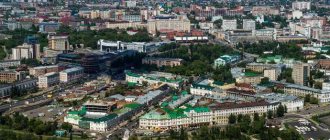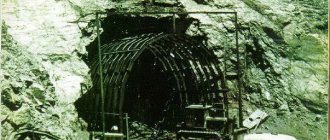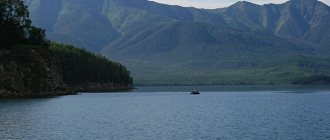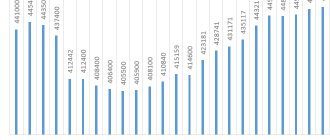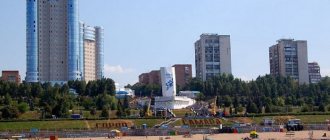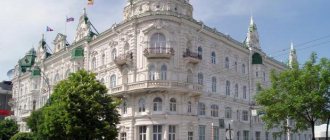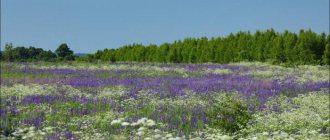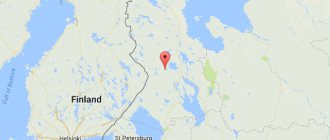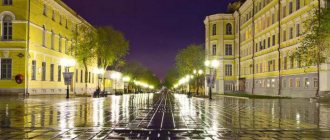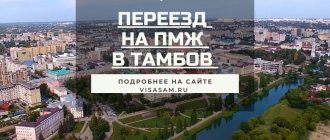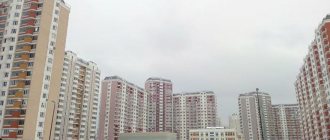An ancient Russian settlement on the banks of the Volga, the city of Kostroma, the population of which will be the subject of consideration in the article, appeared back in the 12th century. Over the centuries, the city grew, changed, developed, and all this was reflected in the composition and size of its population. Today Kostroma belongs to the group of typical medium-sized settlements in Russia. The city also has special characteristics that affect its inhabitants.
Geographical location of Kostroma
300 km from Moscow to the northeast, on the Volga, there is a large port - Kostroma. The city is located on the site of the old mouth of the river of the same name. Kostroma lies on both banks of the Gorky Reservoir, which appeared in the mid-20th century and flooded part of the territory formerly called Kostroma Bay (i.e. water meadows). Several streams and small rivers flow through the city, which are enclosed in pipes so as not to disturb residents.
The settlement is located on the Kostroma Lowland and has a fairly flat landscape that is comfortable for life. The total area of urban areas is 144.4 square kilometers. The distance to the nearest large cities is: to Yaroslavl - 65 km, to Ivanovo - 105 km.
What is the population size? The city of Kostroma is growing due to the gradual absorption of nearby settlements by the city. The agglomeration of Kostroma is slowly but increasing.
Geography
The city of Kostroma is not located at all on the outskirts - only sixty-five kilometers from here to Yaroslavl, a hundred - to Ivanovo. And Moscow is practically nearby. And along the wide, more than half a kilometer Volga from the large and modern river port of Kostroma you can get to either Kazan or Astrakhan. The right bank of the river is picturesque with its steepness, while the left bank is calm and low-lying. There is another river - also Kostroma, its old bed passes not far from the Ipatiev Monastery, and ships heading to the shipyard also sail there.
The natural channel of Kostroma was blocked back in the fifties in order to enlarge the Gorky Reservoir. The artificial one is located on the territory of the region. The city of Kostroma may not be stingy with water - there is a lot of it, and it has high drinking qualities. Soft, with a small amount of minerals, sulfates, chlorides. Of course, in the spring and summer, when floods bring excess organic matter to the Volga, the purification steps increase in number. There is water near Kostroma, and its deposits have already been explored and turned out to be very promising.
Settlement history
The territory where Kostroma is located today began to be populated back in the Neolithic era (5-3 millennia BC). Representatives of the Yamnaya and Volosovo cultures, living here, gave names to the main rivers and lakes. It is believed that the first permanent population in this territory belonged to the Finno-Ugric tribes. However, historical analysis of local place names does not always confirm this version. The first population was mostly temporary; it did not build large, permanent settlements. The confirmed date of foundation of the settlement on the site of Kostroma is considered to be 1152. Historian V.N. Tatishchev researched the life of Prince Yuri Dolgoruky and came to the conclusion that it was at the confluence of the Kostroma and Volga rivers that there was a settlement that he founded. Archeology confirms that several prehistoric cultures existed on the site of the city, but then, for unknown reasons, the population left this area. Therefore, the version about the founding of the city by Yuri Dolgoruky looks quite viable.
In the 12th century, the oldest Feodorovskaya church operated in Kostroma. There is also information about the functioning of three ancient monasteries. The population of Kostroma was quite large for that time. Until the 14th century, the city was in the possession of Yaroslav Vsevolodovich and his descendants. In 1364, Kostroma became part of the Moscow Principality, from that time the stable development of the settlement and an increase in the number of its inhabitants began. In 1709, the city received provincial status, which led to the expansion of its territory. In 1781, Empress Catherine the Second signed a plan for the general restructuring of the settlement. It involved the removal of many defense structures and the creation of public and residential areas.
At the end of the 18th century, industry began to develop in the city, which led to a significant influx of population. The second round of migration to Kostroma occurred in the second half of the 19th – early 20th century. When a city's quality of life improves significantly, new jobs appear. The industrialization of the Soviet period also led to population growth.
During World War II, many medical, industrial and educational institutions were evacuated here. Since the 50s, economic growth in the city began, and this naturally leads to a positive dynamics in the number of residents.
During perestroika, Kostroma, to a lesser extent than many other settlements, experienced a demographic decline, although, of course, there was one. This is due to the preservation of the economic potential of the city. Today Kostroma is beginning to develop new areas of employment for the population, which has a positive effect on demographic indicators.
Monastery
The history of this family shrine began back in the Time of Troubles. The House of Romanov always honored the Ipatiev Monastery, where in 1613 the sixteen-year-old youth elected to the kingdom, Mikhail Feodorovich, was hiding behind impregnable walls. The Polish interventionists set themselves the task of destroying God's anointed, and had already gotten too close to the hiding place of the young king. Then a local peasant volunteered to lead the detachment. Everyone knows how it ended: an impassable swamp, where all the armed bandits from the neighboring state died, but Ivan Susanin also died. And the heir to the throne was saved. After his coronation, it was this dynasty that ruled the Russian Empire for three hundred years. That is why the Ipatiev Monastery honors the house of the Romanovs in this way. Rapid prosperity then began throughout Russia, and this, of course, also affected Kostroma.
The beginning of the seventeenth century marked a special economic growth, making the city one of the largest in the country a century later. Crafts developed most actively here and literally became the face of Kostroma: jewelry crafts, textile production, construction and, of course, icon painting. The economy of Kostroma rose due to the creation of a powerful financial foundation by merchants and industrialists, therefore the further development of the city and an unprecedented increase in the well-being of its citizens took place. Catherine the Great, while cruising along the Volga, was pleasantly surprised by the beauty of its white walls and the cordiality of the reception. As gratitude, she gave the city a coat of arms with a boat, which is still the symbol of Kostroma today. She presented the idea for the development by throwing a fan on the table. This is what Kostroma looks like: the center is Susaninskaya Square, and seven rays from it are the streets, forming a semi-ring open to the Volga bank.
Climate
Kostroma belongs to the temperate continental climate zone. Here you can feel the warm influence of the Atlantic Ocean, which gives winter some mildness. Historically, the population of a city (including Kostroma) depends on the comfort of the climate. Thus, fewer people used to live in harsh regions than in warm ones. The average annual temperature in the city is 4.2 degrees.
The seasons in Kostroma, as well as throughout central Russia, roughly fit into the classical calendar. Summer begins at the end of May and ends at the end of August. The average summer temperature is 22 degrees, the hottest and driest month is July. Winter temperatures average around -10 °C. But several days during the season there can be quite severe frosts, even down to 30 degrees.
Administrative division and population distribution
Today Kostroma is a large regional center. Officially, the city has three large territorial units: Central, Zavolzhsky and Fabrichny districts. Just by the names you can judge the specifics of each part.
Kostroma, the population of which varies greatly across regions, has a distinct center with a high population density and a large number of suburbs that are not officially part of the city limits. These include the villages of Pervomaisky, Novy, Trudovoy, Rebrovka, Karavaevo, Karimovo and many others. The city also has a large number of microdistricts, the number of which is constantly growing due to new buildings.
The second district in terms of population density is Zavolzhsky. In Fabrichny and in the suburbs the density is less, but the area of these parts of the city is constantly growing.
Infrastructure of Kostroma
The level of comfort of life in a city is an important factor of attractiveness for the population and migrants. Social infrastructure, primarily in large cities, includes the transport system. Kostroma, the number of residents (population) of which is gradually growing, including due to the absorption of suburban settlements, has obvious transport problems. They are due to the fact that residents of Fabrichny and Zavolzhsky districts most often go to the city center to work and receive various services. And there are only three bridges across the river, so during rush hours it can be difficult to leave some areas, for example Malyshkovo.
Public transport in the city is represented by buses, trolleybuses, and minibuses. But remote areas are connected to the center mainly by minibuses, the passenger capacity of which is low. The center is well equipped with social enterprises; there are many shops, cafes, museums, and cultural institutions. Of the rest of the city, only the New City microdistrict can boast of a developed infrastructure; residents of other parts of the city often have to go to the center to receive services. All this affects the attractiveness of Kostroma districts for people and the population density in different parts of the city.
General information about Kostroma
Kostroma is a Russian city on the large Volga River, the administrative center of the Kostroma region. The permanent population is 271,445 people. (2013). The area of the city is 144.5 km².
Kostroma, preserved for many centuries as one of the most revered Russian shrines, the Miraculous Icon of the Theodore Mother of God, is one of the remarkable and memorable cities of the “Golden Ring of Russia”, a popular tourist route. The originality of its entire appearance is given, first of all, by the beautiful Volga, which divided the city into two almost equal parts.
Kostroma is one of the most ancient cities in Central Russia, founded in the mid-12th century.
The historical center has preserved an exemplary ensemble of its kind from the classicism era of the late 18th-19th centuries. The city has the official status of “historical” included in the “Golden Ring of Russia”
The city is divided into 3 districts: Central, Fabrichny and Zavolzhsky.
GEOGRAPHICAL POSITION
Kostroma is located on the Kostroma Lowland, on both banks of the Gorky Volga Reservoir, at the old mouth of the Kostroma River - 65 km from Yaroslavl, 105 km from Ivanovo and 301 km northeast of Moscow. The distance from the Moscow Ring Road along the highway (M8 Kholmogory, then P600) is 306 km. The total area of the territory within the city is 144.5 km².
TIMEZONE
Kostroma and the Kostroma region, like neighboring regions, belong to the Moscow Time Zone (MSK/MSD). The offset from UTC is +4:00 (MSD).
CLIMATE
The climate is moderate continental, with a strong moderating influence of the Atlantic Ocean. Average annual temperature - +4.2 C°, average annual wind speed - 3.1 m/s, average annual air humidity - 79%
HYDROLOGY
The main rivers of Kostroma are the Volga (Gorky Reservoir) and its left tributary Kostroma. Kostroma is located on both banks 597-603 km from the source of the Volga (Upper Volga), here the river changes its direction and turns to the southeast. The right bank of the Volga is high and steep, the left bank is low. The width of the Volga within the city is about 600 meters.
Within the city limits, near the Ipatiev Monastery, there is the old bed of the Kostroma River, now it is an additional ship passage leading to the ship repair yard and the settling and repair point of the port of Kostroma.
CITY SYMBOLICS
The city of Kostroma, in accordance with federal legislation and heraldic rules, has official symbols - a coat of arms, a flag, an anthem, reflecting historical, cultural, national and other local traditions and characteristics (Article 4 of the Charter of the city of Kostroma).
Coat of arms and flag of Kostroma
The historical coat of arms of Kostroma was approved on October 24, 1767, restored on July 5, 1878, and again restored on October 7, 1992. The coat of arms of Kostroma is the first city coat of arms in the history of Russia.
Depicts the galley "Tver", on which Empress Catherine II arrived in Kostroma.
In an azure field, sailing to the left on azure waves with silver crests is a golden galley with silver sails and ten golden oarsmen; on the mast is the Imperial standard.
On August 22, 2002, the historical coat of arms was approved as the current symbol of the city.
The flag of Kostroma was created based on the symbolism of the coat of arms. There is no officially approved Kostroma anthem.
HISTORY OF KOSTROMA
origin of name
There is no single scientifically based view on the origin of the city's name. Obviously, this is a hydronym: the name is derived from the river on which it stands. "Kostra" (or "kostrika") in East Slavic dialects refers to straw for burning. In Vasmer's dictionary, this toponym is associated with an East Slavic ritual character, who was a straw doll that was symbolically burned during the summer ritual cycle - on Semik or Peter's Day (“funeral of Kostroma”).
There is also a version of the Finno-Ugric origin of the name: Finn. kosto - revenge, Finnish. maa - earth, “Land of retribution.” However, the identification of the formant -ma is controversial in some cases, and the basis kostra is atypical for the pre-Russian hydronymy of this region. Foundation of the city
The founding date of Kostroma is officially considered to be 1152. This date was proposed by the historian V.N. Tatishchev, linking this event with the activities of Yuri Dolgoruky in the northeast of Rus'. There are no reliable indications of this, just as other existing hypotheses do not have serious scientific support.
AUTHORITIES
The permanent representative body of local government of the city since 1994 has been the Duma of the city of Kostroma, elected for a term of 5 years. In October 2010, the Duma of the fifth convocation was elected, which included 35 deputies. The Duma of the city of Kostroma is headed by Yuri Valerievich Zhurin.
The highest official of the city is the head of the city of Kostroma. In 2008, amendments were made to the Charter of the city of Kostroma, abolishing the popular election of the head of the city, establishing the procedure for electing the head of the city from among the deputies of the Duma of the city of Kostroma and introducing the position of head of the city administration (city manager), hired on a competitive basis. On February 24, 2011, Yuri Valerievich Zhurin was elected head of the city.
On July 19, 2012, Viktor Valentinovich Yemets was appointed head of the city administration (city manager).
INDUSTRY
Kostroma is an ancient center of the textile industry (mainly linen). The most famous are the flax mill named after I. D. Zvorykin, the Bolshaya Kostroma Linen Manufactory, and the Belt Braid factory.
The mechanical engineering industry is represented by an enterprise for the production of cylinder-piston groups (Motordetal-Kostroma). The production of heating, ventilation, heat exchange and energy-saving equipment has been developed (Concern Medved). There are companies in the city producing commercial equipment: shelving, cash registers (KS-Rus), including refrigeration (Brandford). Both heavy (excavator production), medium (production of dyeing and finishing equipment) and precision (heater production) mechanical engineering are developed.
Heat and electricity are produced by Kostroma CHPP-1 and Kostroma CHPP-2.
The woodworking industry is actively developing (plywood mill "Fanplit", furniture factory "Kostromamebel", furniture factory "Takos"), polymer () and food industry (FL Federal State Unitary Enterprise "Kostroma Distillery", distillery, food plant "Merengue", plant for the production of frozen cutlets, the production of bottled water "Holy Source", bakeries, dairy plants, bakeries, etc. In addition, the region operates the production of building materials (Kostroma Construction Materials Plant, silicate brick plant), consumer goods (enterprise "FEST" and others) and textile products.
Kostroma is famous for jewelry production; there are a number of jewelry manufacturing enterprises in the city: the Kostroma Jewelry Factory, as well as the jewelry enterprises Al, Topaz, Diamant, Egret, Delta, and the enterprise for the production of jewelry demo equipment LLC Diadema -Kostroma.
BANKING AND TRADE
There are 12 financial and credit institutions in the city (mainly branches, but there are also local banks: Sovcombank, Regional Credit, Kostromaselkombank, Aksonbank, Confidence Bank).
The city has a developed retail trade, there are supermarkets, shops and shopping centers, including those belonging to federal retail chains: AI, Akson, Euroset, M.Video, Svyaznoy, Tekhnosila, Eldorado.
CONNECTION
The main operators of communication services (landline telephone communication and provision of Internet access) in the city are OJSC Rostelecom and OJSC KGTS (Kostroma City Telephone Network). Wired Internet access and IP telephony services are also provided by several providers: Beeline, PROSTOR Telecom (Kvantum CJSC), Logos, etc.
Mobile telephony is represented by four GSM operators: MegaFon, MTS, Beeline, Tele2 and one CDMA operator - SkyLink.
TOURISM
Tourism is considered as the most important direction for the development of the city's economy. Kostroma is traditionally included in the “Golden Ring of Russia” tourist route and cruises on the Volga.
The number of tourists and excursionists visiting the city annually does not exceed 400 thousand people. The hospitality infrastructure, in general, is sufficiently developed. Most tourists visit the city as part of a day excursion.
At the end of 2013, there were more than 20 hotels in the city, including: hotel complexes “Volga” and “Snegurochka”, hotels “Business Hotel”, “Azimut Kostroma”, “Golden Ring”, “Aristocrat”, “ShelestoFF”, “ Premier", "Uyut", hotel and health complex "Troy" and others.
City and regional authorities are developing a number of tourism brands, such as Kostroma - the pearl of the Golden Ring, Kostroma God-protected, Kostroma - the jewelry capital of Russia, Kostroma and the Berendeevo kingdom - the birthplace of the Snow Maiden, Ivan Susanin - Patriot of the Russian Land, Kostroma Royal and others.
TRANSPORT
City transport is represented by bus, trolleybus and minibus. There are 58 operating city routes in Kostroma with a length of more than 600 kilometers.
In August 2011, the largest renewal of the vehicle fleet in recent years took place: 33 PAZ and LiAZ buses equipped with the GLONASS system were purchased for the new municipal transport enterprise Kostromagortrans under leasing terms. It is planned to equip the new buses with external and interior electronic displays, a video recording system and a validator.
The price of travel on Kostroma municipal transport is 15 rubles
Automobile transport
Kostroma is connected to Yaroslavl by a branch of the M8 Kholmogory highway, and to the cities of Ivanovo and Vladimir by the federal highway P600.
A significant load of transit and urban traffic flows falls on the only automobile and pedestrian bridge across the Volga, located near the city center.
The long-term development plan for Kostroma provides for the construction of a bypass road and a second road bridge downstream outside the city limits.
Water transport
There is a river port in Kostroma, but regular passenger service is limited: the movement of high-speed vessels was stopped in the late 1990s, local transportation is carried out by a motor ship of the "Moscow" type. During the summer, the port receives cruise ships daily.
Air Transport
Sokerkino Airport serves a small number of local flights. Among them are flights: • Kostroma - Sharya - Bogovarovo on An-2 aircraft • Kostroma - Kineshma - Yuryevets on Mi-2 helicopters (from April to September on Friday and Sunday).
On April 14, 2009, air traffic with Moscow was resumed, and since 2010 - with Yuryevets, Anapa and St. Petersburg
Railway transport
Kostroma is connected by daily direct communication with Moscow (Kostroma train) and St. Petersburg (trailer direct carriages with re-coupling at Nerekhta station).
The city has access to the main railways: an electrified single-track section Kostroma - Yaroslavl and a single-track diesel locomotive section Kostroma - Galich (Northern Trans-Siberian).
Passenger trains run year-round from Moscow to Khabarovsk, and in the summer from Moscow to Vladivostok, Kostroma to Anapa (via Ryazan) and Kostroma to Adler (via Lipetsk).
Suburban communication is carried out by electric trains to Nerekhta and Yaroslavl: electric trains run daily with all stops (travel time to Yaroslavl is about 3 hours) and express trains (travel time about 2 hours). There is also a diesel-hauled commuter train running daily on the route Kostroma - Galich (journey time 3.5 hours).
Interregional, intercity and suburban transport
The bus station of the city of Kostroma consists of two divisions: 1. Bus station: Kineshemskoe highway, no. 21. interregional, intercity and suburban communications. 2. Suburban bus station: Kalinovskaya street, no. 42 suburban connection with the Kostroma Sea area and with the right bank of the Volga River.
EDUCATION
Currently, there are four state universities in the city - Kostroma State University named after N. A. Nekrasov, Kostroma State Technological University, Kostroma State Agricultural Academy and the Military Academy of Radiation, Chemical and Biological Protection and Engineering Troops named after Marshal of the Soviet Union S. K. Timoshenko .
There are branches and representative offices of state and non-state universities, secondary vocational educational institutions (music school, medical college named after Hero of the Soviet Union S.A. Bogomolov, school of culture, highway college, college of consumer services, forestry college, mechanical engineering college, technological college, polytechnic college , construction technical school, trade and economic college, energy technical school named after F.V. Chizhov), institutions of primary vocational education (colleges and schools), planetarium.
Institutions of general education (lyceums, gymnasiums, schools, boarding schools, evening shift schools), institutions of additional education for children and preschool educational institutions (kindergartens) are under municipal subordination. Six children's music schools and two art schools provide primary music and art education.
CULTURE
Theaters and concert and entertainment institutions: one of the oldest in Russia, the Kostroma State Drama Theater named after A. N. Ostrovsky (since 1808), the Kostroma Regional Puppet Theater (since 1936), the Kostroma Chamber Drama Theater (1998), concert and exhibition, State Philharmonic Kostroma region.
There are four modern cinemas in the city: “Druzhba XXI Vek” (2 halls), “Volga” (2 halls) and “Five Stars” (6 halls), “Sinima Star”.
The main museum institutions of Kostroma: historical, architectural and art museum-reserve, which includes: the Romanov Museum, guardhouse, Fire Tower, Romanov Museum, Noble Assembly, art gallery, museum-reserve of wooden architecture "Kostromskaya Sloboda", Museum of Nature of the Kostroma Region , Museum of “Theatrical Costume”, Museum “Fairy Land of the Snow Maiden”, Residence of the Snow Maiden, Terem of the Snow Maiden, Church Historical and Architectural Museum, Art Gallery of the City of Kostroma.
There are private museums: the Flax and Birch Bark Museum-Estate, the Wonderland Forest, the Museum of Jewelry Art, the Museum of Peter the Great's Toy, the Museum of Unique Dolls and Toys.
The centralized library system of Kostroma unites 20 libraries with a total collection of about 1.5 million volumes, including the Kostroma Regional Universal Scientific Library and the Kostroma Regional Children's Library named after Arkady Gaidar, and university libraries.
At the beginning of the 21st century, there are four municipal creative groups in the city (municipal symphony orchestra; municipal choral academic chapel; Volga-Volga music, song and dance ensemble; municipal harmonica ensemble "Makhonya").
The Russian National Ballet “Kostroma” is widely known. Since 1998, an open city festival-competition of children's, youth and youth creative groups and performers “Spring Kostroma” (originally “Autumn Kostroma”) has been held in Kostroma, in which more than 3 thousand participants take part annually.
Kostroma hosts the annual regional festival of children's and youth creativity "Freestyle". The winners take part in the big gala concert “Freestyle”, which takes place at the end of January.
In 2008-2011, a number of ambitious cultural and entertainment events were implemented in Kostroma, including the Constellation festival, an exhibition of Faberge products, an outdoor stage production of the operas Boris Godunov and Khovanshchina, and others. The Silver Boat fireworks festival, traditionally held in August, has twice been recognized as the best pyrotechnic show in Russia.
The city also has a well-developed entertainment and leisure infrastructure.
HEALTHCARE
The city has a developed system of regional medical institutions, including an ambulance station, a network of hospitals and clinics (including children's). There are a number of specialized institutions - medical clinics, a blood transfusion station, several dental clinics, a center for psychotherapy and practical psychology, antenatal clinics, and maternity hospitals. Private medicine has developed widely.
As of 2011, in Kostroma there were 91 healthcare institutions (departments) (including 11 hospitals, 3 dental clinics, 24 ambulance teams, etc.), 35 municipal medical institutions (HCI), 74 non-state healthcare institutions. In total, there were 2,120 doctors in the listed institutions (not counting dentists).
The number of nursing staff in these institutions was 5,326 people. Total number of hospital beds - 4115 units
MASS MEDIA
Print mass-media
• Local publications: “Voice of the People - Kostroma”, “Provincial Business Review”, “Kostroma People’s Newspaper”, “Kostroma Fair”, “Kostroma Vedomosti”, “Kostroma Territory”, “My City - Kostroma”, “New Kostroma Vedomosti” , “Northern Truth” (the official press organ of the administration of the Kostroma region), “Middle class in Kostroma” and others. • Regional issues of online publications: “Arguments and Facts”, “Business Magazine”, “Hand to Hand”, “Apartment”, “Komsomolskaya Pravda”, “MK in Kostroma”, “Chronometer-Kostroma”, “Expert” and others . • Glossy magazines: “Photoshop”, “Number”, “Bridge”, “There is a solution”, “Wedding Planner”, “Accents”, Tele7
Electronic media
The transmission of television and radio broadcasting signals in the city is provided by the Kostroma branch of the Federal State Unitary Enterprise RTRS. On Myasnitskaya Street there is a regional radio and television transmission center (ORTPC) with a tower 100 meters high (put into operation in 1958)
Throughout the city, on-air reception of 11 television programs is provided: Russia K, Channel One, NTV, STS - Logos, Russia 1 - GTRK Kostroma, TVC-Kostroma, Channel Five, Perets, TNT, Yu, K10 - Rus - KIT - Russia 24.
Kostroma television broadcasts began in 1992. Currently, local television studios are broadcasting programs: State Television and Radio Broadcasting Company "Kostroma", OTRK "Rus", "Kostroma Information Television", "Logos". Several operators provide cable television coverage of city districts, broadcasting dozens of Russian and foreign channels.
At the beginning of 2011, the city provided broadcasting of 12 all-Russian and local radio stations in the VHF OIRT (since 1960) and VHF CCIR bands.
Population size and density
Regular observations of the dynamics of the number of residents in Kostroma began in 1811. At that time, 10 thousand people lived in the city. Until the mid-19th century, there was no stability in the number of residents; fluctuations reached 4 thousand people over several years. But since 1856, the number of Kostroma residents has only grown. This continued until 2000, when a negative trend of one thousand people was first recorded.
Even during the years of wars and revolutions, Kostroma remained an attractive city to live in. Until 2011, it decreased by an average of one thousand inhabitants. But gradually the dynamics returned to positive. Today the population of Kostroma is about 276,700 people. The increase in recent years has reached 3 thousand people. in year. The average population density in the city is 1,900 people per square kilometer. This is twice the average for the Kostroma region.
Sexual differentiation of the population
Kostroma, the population size, the number of men and women of which are the subject of close observation by sociologists, fits into the general Russian trend in gender ratio. On average, the number of men is less than women by about 20%. For every thousand men there are 1204 women. As throughout the country, the number of boys at birth slightly exceeds the number of girls. And with age, this ratio changes, reaching maximum values in adulthood.
Demographic coefficients
Calculation of demographic coefficients makes it possible to predict the economic development of the region. Kostroma, whose population has been growing slightly in recent years, is one of the “aging” cities.
Life expectancy is increasing, mortality is decreasing, the birth rate is decreasing at a slight pace, and sociologists say that there is a possibility of even greater negative dynamics of this indicator in the coming years. All of the above leads to the fact that the dependency ratio is growing. Today, every able-bodied resident of Kostroma must provide accommodation for 0.4 more people besides himself. And in the future this load will increase. The pension burden ratio is also increasing, since the number of people over retirement age will only increase every year. All this entails certain economic and social difficulties.
Economy of Kostroma
The quantity and quality of the population is very strongly influenced by economic indicators. If people have a stable income and guarantees for the future, then they are more willing to have children. If they live in abundance, they eat better, receive better health care and live longer.
Kostroma, whose population is gradually growing, compares favorably with many Russian cities with a large number of stable industrial enterprises. There are factories producing auto components, ventilation, energy-saving, heating, commercial, and refrigeration equipment here. The city has a well-developed food, manufacturing and textile industry. In recent years, the tourism sector has been growing rapidly, and the service sector is worse. The city's economy is experiencing difficulties with investment, with the development of socially significant areas of healthcare, education, and culture.
National composition and culture
There are no dominant diasporas in Kostroma in terms of ethnic or national composition. Russians are a large and main part of the population. The rest behave smoothly. Only a few Chinese are relatively local - they live separately and work quietly. The rest fit into the microclimate of the city - this is the Muslim community, led by Tatars, the Armenian diaspora, and Azerbaijanis. In addition to numerous Orthodox churches, there is a functioning synagogue in Kostroma, and a mosque is already being built. The city is also filled with small religious communities and organizations.
Kostroma is a city of highly educated and cultured people. Exhibitions and concerts, a drama theater and a philharmonic society, numerous museums never suffer from lack of attendance, and sell-outs are frequent, and among the visitors there are approximately equal numbers of middle-aged people and young people. Kostroma residents know how and love to relax. Naturally, tourism plays a big role in the pearl city of the Golden Ring of Russia. This also obliges the population to comply with the declared level. During navigation, several beautiful motor ships dock at the berths in the port every day, making cruises along the Volga.
Employment
Availability of work is very important for the demographics of the region. Kostroma, whose population (number of inhabitants) is growing and whose economy is functioning stably, compares favorably with many Russian cities with a low unemployment rate. It is only 0.8%. There is enough work in the city. However, there are problems with employing highly qualified personnel. Employment centers mainly offer vacancies for blue-collar workers, but those with higher education, especially women over 30, may find it difficult to find work in their specialty.
Population explosion
The Kostroma Civil Registry Office provided data that back in 2011 the city managed to overcome the bad trend that was prevalent throughout the country of population decline. Over the past twenty years, everywhere the mortality rate has significantly exceeded all birth rates. Kostroma is rapidly growing in population, and this is noticeable even to the naked eye: an incredible number of pregnant women walking along the city streets. And if you visit any antenatal clinic, you can see huge queues to each office. And these are not ordinary sick patients, judging by their appearance - almost all of them are in an “interesting” situation. In the entire Central District, Kostroma holds first place in terms of birth rates. The population of Kostroma is distributed quite proportionally: the average age of women is forty-three years, and of men - thirty-seven.
Kostroma is also growing in number of visitors. There is a very serious influx of rural and rural residents into the city, who come after finishing school, enter colleges, lyceums, universities, and then get a job, start families and try with all their might to gain a foothold in this blessed city. There are almost twenty percent more women in Kostroma than men. Moreover, very, very beautiful women. There are three universities in the city - the Agricultural Academy, the Technological and Pedagogical Universities, and the Military Academy of Radiation, Chemical and Bacteriological Protection. Not all cities with a population of over a million have such a level of higher education.
